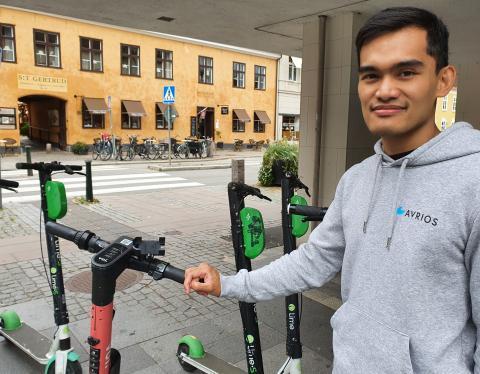Article highlighted
Fun, green or functional – why travellers want to use green transport innovations

There is a growing interest in how innovations can reduce the environmental impact of the transport sector, not the least for public transport. Phil Flores from Lund University has recently defended his thesis which provides an understanding of what motivates people to use new modes of transport that are promoted as environmentally friendly. The thesis focuses on two emerging transport innovations – shared electric scooters and electric bicycles.
Phil's research shows that travellers choose modes of transport for various reasons that do not always align with the intentions of the provider. Motives can revolve around functionality and environmental impact, but also social status and entertainment.
"Even though green innovations are developed to reduce environmental impact, that's not always why they are used. For successful regulation and integration of new modes of transport into the transport system, it’s important to reflect on how they will actually be used before introducing them," says Phil Flores.
Shared e-scooters replace public transport and walking
Shared electric scooters and electric bicycles have been presented as environmentally friendly alternatives with the potential to complement public transport and replace trips by car. However, Phil's research shows that these transport modes instead replace trips by public transport and walking.
“For many people, the primary reason for using shared e-scooters and e-bicycles are not because they are considered practical or environmentally friendly, but because they contribute to positive feelings – it’s fun” explains Phil Flores.
"Shared e-scooters and e-bicycles are mainly used for the entire trip, not just to get to the nearest stop or station. When users were asked what mode of transport they would use if they didn't travel with these vehicles, most said they would have walked or used public transport," says Phil.
How innovative you are matters
Phil's research suggests that those who are eager to adopt innovations and try new things are more inclined to also try new modes of transport. However, the study also shows that one can be innovative in different domains.
"You can have an interest in the environment without being particularly interested in transport. In that case, you might want to try innovations in public transport because it’s considered an environmentally friendly product. Someone else might want to try new modes of transport not because they care about the environment but because there is a fundamental interest in transport" explains Phil.
"The results suggest that there is a diversity of potential target groups that the marketing of green transport innovations can be tailored to," says Phil Flores.
Considerations when promoting green transport innovations:
- Take into account the various motivations for using new modes of transport.
- Highlight the fun and enjoyable aspects of sharing a journey with others when promoting shared mobility services. Provide feedback on the environmental impact throughout the journey.
- Direct marketing of shared mobility services toward individuals interested in innovations in the categories of transport and/or environmentally friendly products.
- Continue to introduce new features regularly and highlight them in the marketing of green transport innovations.
Read more in Phil’s thesis "Not all green innovations are created equal: Consumer innovativeness and motivations in the adoption of shared micromobility".
